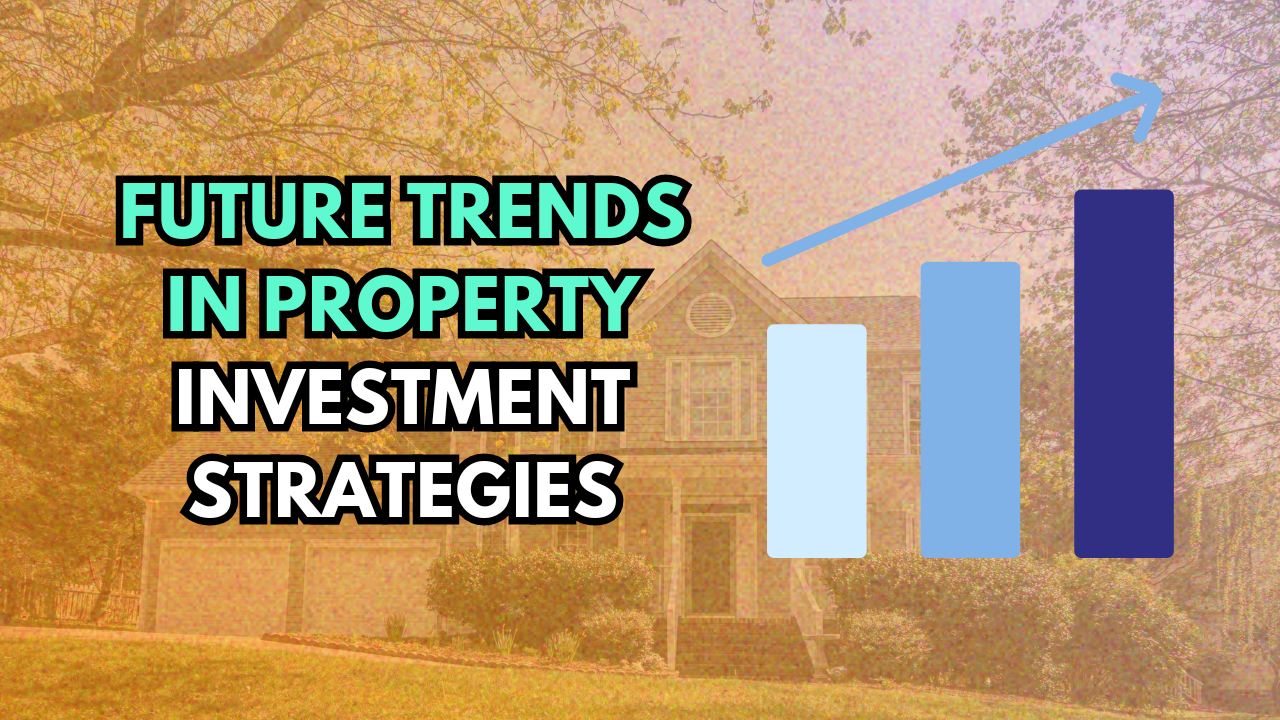Future Trends in Property Investment: What to Expect and How to Prepare
Property investment has always been one of the most reliable ways to build wealth and secure long-term financial growth. However, the landscape of real estate investment is constantly evolving. With emerging market trends and shifting societal needs, future trends in property investment are shaping the way investors approach the market. Understanding these trends can help you make informed decisions and stay ahead of the curve in the fast-changing world of property investment.

The Evolution of Property Investment
The property investment sector has undergone significant transformations over the years, influenced by technological advancements, economic shifts, and changing consumer preferences. As the future of the real estate market becomes increasingly complex, it’s essential to understand the forces driving these changes.
1. Technological Advancements in Real Estate
Technology is playing an increasingly central role in property investment, from virtual tours to blockchain technology for secure transactions. Here’s how technology is changing the landscape:
- Virtual Reality (VR) and Augmented Reality (AR): Real estate investors and buyers can now take virtual tours of properties, providing a more immersive and accessible viewing experience.
- Artificial Intelligence (AI): AI is being used to predict market trends, analyze data, and optimize property prices. By analyzing vast amounts of market data, AI can offer insights that help investors make better decisions.
- Blockchain Technology: Blockchain can provide more transparency and security in property transactions, reducing fraud and improving efficiency in the buying and selling process.
“Technology is not just reshaping how we buy and sell property, it’s transforming how we invest and manage properties.”
2. Sustainability and Green Building
As environmental concerns continue to rise, sustainable real estate is becoming an attractive option for investors. Green buildings, which incorporate energy-efficient designs and sustainable materials, are gaining in popularity. Investors are recognizing the potential for these properties to command higher rents, reduce operating costs, and increase long-term value.
Key trends in sustainability include:
– Energy-efficient buildings: Properties with energy-saving features, such as solar panels, smart thermostats, and LED lighting, are more attractive to tenants and can offer higher returns.
– Green certifications: Properties that meet green building standards, such as LEED (Leadership in Energy and Environmental Design), are increasingly sought after.
– Urban farming and green spaces: More urban developments are incorporating gardens and green spaces, adding value to properties and promoting a healthier environment.

3. Rise of Mixed-Use Developments
Mixed-use developments, which combine residential, commercial, and retail spaces, are becoming increasingly popular. These developments offer convenience and can provide more consistent rental income for investors.
Benefits of mixed-use developments include:
– Diverse income streams: Investors can benefit from a mix of residential rents, commercial leases, and retail tenants.
– Attractiveness to tenants: Tenants are increasingly looking for properties that provide easy access to work, shopping, and leisure. Mixed-use developments meet these needs.
– Long-term stability: With a variety of tenants, mixed-use properties may offer more stability than single-use properties, as they are less vulnerable to market fluctuations in one sector.
4. Shift Towards Regional and Suburban Areas
The ongoing shift away from large cities to suburban and regional areas is a key trend in property investment. With more people working remotely and seeking a better work-life balance, suburban and regional properties are becoming more desirable.
Key drivers of this shift include:
– Remote work: The rise of remote work has allowed people to live further away from urban centers while maintaining their jobs, making suburban areas more attractive.
– Affordability: Rising housing prices in major cities are pushing people to explore more affordable options in the suburbs.
– Quality of life: Many people are seeking quieter, more spacious environments with access to nature, making suburban areas an appealing option for families and retirees.
“The suburbs are becoming the new hotspots for both renters and homebuyers, with more affordable housing and access to nature.”
5. Impact of Demographics and Changing Lifestyles
As demographics evolve, so do the preferences of those seeking rental properties or homes to buy. The Millennial and Gen Z generations are reshaping the market with their unique preferences and values, while the aging Baby Boomer generation is also having an impact on housing trends.
- Millennials and Gen Z: These generations prioritize affordable housing, sustainability, and proximity to work and amenities. As these groups enter the property market, their preferences will influence demand for smaller, more affordable, and eco-friendly homes.
- Baby Boomers: As Baby Boomers age, there will be an increased demand for age-friendly housing, such as retirement communities and accessible homes that cater to their changing needs.
6. The Growth of Short-Term Rentals
The demand for short-term rentals (such as those offered through platforms like Airbnb) continues to grow, providing property investors with a new opportunity to generate income. Short-term rentals offer flexibility and the potential for higher rental yields compared to traditional long-term leases.
However, investors must be mindful of:
– Local regulations: Many cities have enacted laws limiting or regulating short-term rentals. Be sure to check local rules before investing in this type of property.
– Market volatility: The short-term rental market can be volatile, with demand fluctuating based on seasonal trends and broader economic conditions.

How to Prepare for Future Property Investment Trends
Understanding the future of property investment is essential for staying competitive in the market. Here are some strategies to help you prepare for these upcoming trends:
1. Stay Educated and Informed
The world of real estate investment is constantly changing. Keeping up with emerging trends and technological advancements will help you make better decisions and adapt to market shifts. Subscribe to real estate blogs, attend investment seminars, and stay updated on local market conditions.
- Recommended reading: Investopedia’s Guide to Real Estate Investing
- Subscribe to real estate newsletters or property investment podcasts to stay informed on the latest trends.
2. Embrace Technology
Investors should leverage technology to stay ahead of the curve. Tools like property management software, AI-powered investment platforms, and virtual property tours can streamline operations, reduce costs, and provide better insights into the market.
3. Diversify Your Portfolio
As the property market evolves, diversifying your portfolio can help mitigate risks. Consider investing in different types of properties, such as mixed-use developments, sustainable real estate, and short-term rentals, to tap into emerging opportunities.
4. Focus on Sustainability
Investing in green buildings and energy-efficient properties will not only help reduce environmental impact but also increase your property’s appeal to modern tenants. As demand for sustainable living spaces grows, eco-friendly investments are likely to offer long-term value.
5. Adapt to Changing Demographics
Understanding the needs of different demographics—whether it’s millennials seeking affordable housing or baby boomers looking for accessible living options—will allow you to tailor your investments to changing market demands.
FAQs About Future Trends in Property Investment
1. How will technology impact property investment in the future?
Technology will continue to revolutionize property investment by improving efficiency, enhancing market analysis, and offering new investment opportunities such as virtual tours and blockchain transactions.
2. What is the impact of sustainable properties on investment returns?
Sustainable properties tend to offer higher returns due to lower operating costs, higher rental demand, and increased property value. As sustainability becomes more important to tenants, green buildings are likely to become a significant market trend.
3. Is it better to invest in urban or suburban properties in the future?
The shift toward suburban and regional areas is expected to continue, driven by remote work trends and the desire for more affordable living. However, urban properties still have strong potential, particularly in mixed-use developments or areas with high demand for short-term rentals.
4. How can I prepare for changes in property investment trends?
Staying informed about emerging trends, diversifying your investments, and embracing new technologies will help you stay competitive in the evolving property market.
Conclusion
The future of property investment offers exciting opportunities for those who stay informed and adapt to emerging trends. Whether you’re focusing on sustainability, embracing new technologies, or capitalizing on shifts in demographics, understanding and preparing for these changes will help ensure that your property investments remain profitable in the years to come.
For more information on future property trends, visit Empire 8 Property, or learn about upcoming real estate trends at Raichandani Group.

